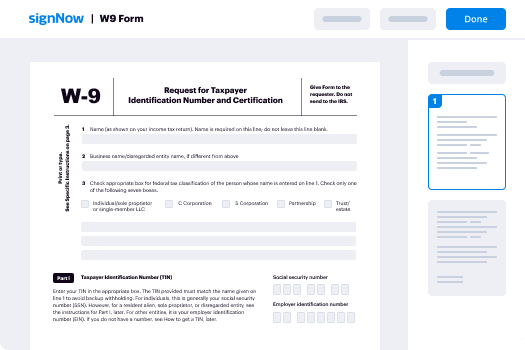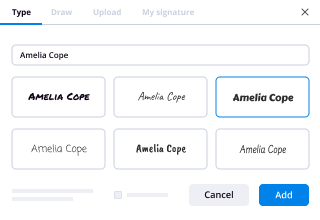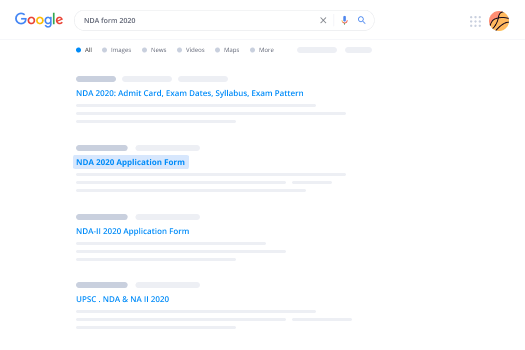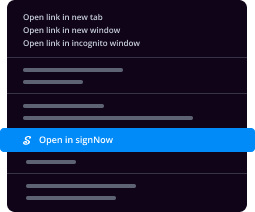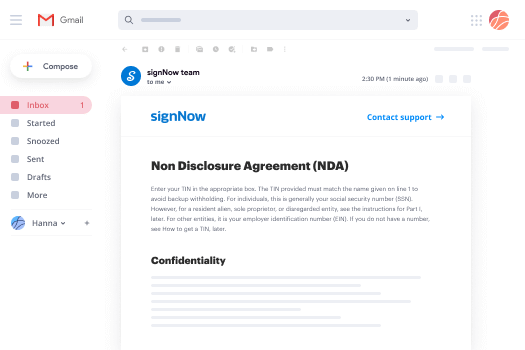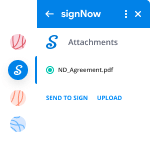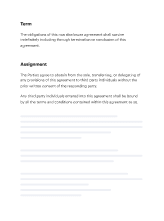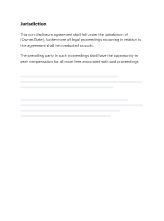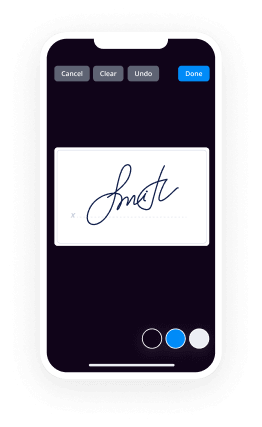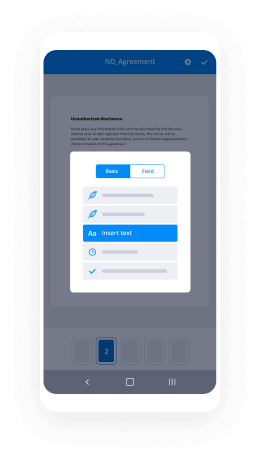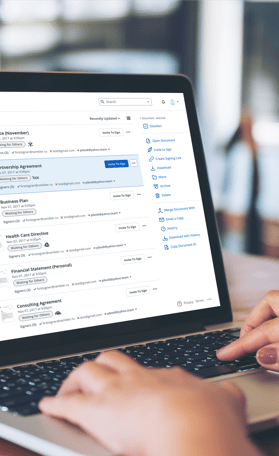GUIDE FOR PROTECTING DECEASED PERSONS
FROM IDENTITY THEFT
By Dana Altman and Della Sellers, USLegalForms.com Staff Attorneys
Introduction
Identity theft is a pervasive and fast-growing crime that affects millions of Americans
each year. The Federal Trade Commission reported that 43 percent of all complaints
received in 2002 were based on identity theft. Unfortunately, a person is never free from
the threat of identity theft, no matter what age and even after they are deceased. Identity
theft of the deceased occurs when an imposter steals the identity of a specific person who
has passed away and uses the deceased person’s name, likeness and/or personal
information as his or her own. The majority of thefts involve persons who are not widely
known to have died. This crime may be attractive to identity thieves because of the length
of time until discovery. Financial institutions and credit reporting agencies are not
immediately aware that a particular consumer has died and may issue credit or loans in
the deceased person’s name. Additionally, government agencies do not always cross-
check a person’s history when he or she applies for services to determine if a death
certificate has been issued in that individual’s name. Until the credit reporting agencies
and creditors are notified, a deceased person’s account remains open or active. This
notification process can be slow, and some names are never reported. It is the
responsibility of relatives of deceased persons, funeral directors, consumers and/or
governmental agencies to notify the individual states of a person’s death. The states then
must report this information to the Social Security Administration (SSA) who maintains a
Death Master File/List that it transfers to the financial industry.
Imposters who steal the identity of deceased persons do so, not necessarily for immediate
criminal financial gain as is the case for typical identity thieves, but to acquire the
person’s identity for long-term use, such as taking on a person’s name for legal or
immigration purposes. Some imposters may want to start their lives over, avoid arrest or
begin a new criminal career. An imposter will typically steal the identity of a person who
would be approximately the same age, race, ethnic background and gender as the
imposter if he or she were still alive.
The true victims of identity theft of deceased persons may be the surviving loved ones
who not only must grieve for the loss of the deceased person, but must clear the deceased
person’s name. Although it may not be practically difficult for a relative or spouse to
present a copy of the deceased person’s death certificate to resolve fraudulent charges or
a fraudulently opened account, dealing with the identity theft in addition to losing a
family member or spouse can be emotionally overwhelming. Moreover, a spouse who
shared joint accounts with the deceased person may face serious financial implications of
the identity theft.
Federal legislation exists to help victims of identity theft, as well as many state laws,
which vary by state. In the fall of 1998, for example, Congress passed the Identity Theft
and Assumption Deterrence Act. This legislation created a new offense of identity theft,
which prohibits knowingly transferring or using, without lawful authority, a means of
identification of another person with the intent to commit, or to aid or abet, any unlawful
activity that constitutes a violation of federal law, or that constitutes a felony under any
applicable state or local law (18 U.S.C. § 1028(a)(7)). This offense, in most
circumstances, carries a maximum term of 15 years' imprisonment, a fine, and criminal
forfeiture of any personal property used or intended to be used to commit the offense.
Acts committed in connection with identity theft or fraud may also involve violations of
other statutes such as identification fraud (18 U.S.C. § 1028), credit card fraud (18 U.S.C.
§ 1029), computer fraud (18 U.S.C. § 1030), mail fraud (18 U.S.C. § 1341), wire fraud
(18 U.S.C. § 1343), or financial institution fraud (18 U.S.C. § 1344). These federal
offenses are felonies that carry substantial penalties in some cases, as high as 30 years'
imprisonment, fines, and criminal forfeiture.
Federal legislation has also been introduced and is pending that would directly address
identity theft of deceased persons. The Identity Theft Protection for the Deceased Act and
the Identity Theft Prevention and Timely Reporting Act would require the federal
government to notify each of the national credit reporting agencies when an individual
dies. The credit reporting agencies would then be required to place a permanent fraud
alert in deceased persons’ files to prevent creditors from issuing credit or new loans to
persons attempting to misuse the personal information of the deceased individual.
How Criminals Steal a Deceased Person’s Identity and Signs that a
Deceased Person May be the Victim of Identity Theft
Some of the more common methods criminals use to obtain a deceased person’s personal
information for illegal purposes include combing through detailed obituaries or
newspaper articles that include the deceased person’s identifying information and
matching it up with Social Security numbers posted on the Internet, on genealogy or
ancestry websites or on websites that post the SSA’s Master Death Index. Imposters also
obtain identifying information for deceased persons by stealing death certificates.
You may discover that a deceased person has become the victim of identity theft if a
collection notice, credit card bill or a notification from law enforcement is sent in the
deceased person’s name. You may also discover identity theft of a deceased person by
reviewing the deceased person’s credit report.
Steps to Take When a Loved One Dies to Prevent Identity Theft
1. Obtain at least 12 copies of the official death certificate of the deceased person
from the agency in your state that makes them available, such as the Department of
Health, County Clerk or the Office of Vital Statistics or Records. Some entities will
accept a photocopy, but others will require an original.
2. Notify credit card companies, banks, stock brokers, loan or lien holders and
mortgage companies of the death of the deceased person. Address the outstanding debts
of the deceased person by transferring the account to another person or closing the
account. For joint accounts, you may want to change the name on the account to just
include the surviving spouse’s name or close the account and open a new account under
the surviving spouse’s name. For accounts you are closing, request that the company list
the account as “Closed. Account holder is deceased.” USLegalForms.com provides a
sample letter at http://www.uslegalforms.com/us/US-00731-LTR.htm to use to make the
above requests.
3. Contact each of the three credit reporting bureaus or agencies (death information
is not shared between the agencies) in writing and request a copy of the deceased
person’s credit report to inform you of any collection notices or credit cards that need to
be closed. Request that a “deceased” alert be placed on the report to prevent fraudulent
accounts from being opened. The alert should read “Deceased. Do not issue credit. If
someone applies for credit, notify the following person(s) immediately: (provide the
name of the next surviving relative, executor/trustee of the estate and/or law enforcement
agency, as well as the relationship of the person(s) listed to the deceased).” Also request
all contact information on any accounts currently open in the deceased person’s name,
such as credit grantors or collection agencies, so that you may contact those entities as
well.
USLegalForms.com provides a sample letter at http://www.uslegalforms.com/us/US-
00732-LTR.htm to use in making the above requests from the credit reporting agencies.
The following is a list of the contact information for each of the credit reporting agencies:
Equifax: 1-800-525-6285; www.equifax.com; P.O. Box 740241, Atlanta, GA 30374-
0241
Experian: 1-888-EXPERIAN (397-3742); www.experian.com; P.O. Box 9532, Allen, TX
75013
TransUnion: 1-800-680-7289; www.transunion.com; Fraud Victim Assistance Division,
P.O. Box 6790, Fullerton, CA 92834-6790
4. Notify the Social Security Administration of the deceased person’s death.
USLegalForms.com provides a sample letter at http://www.uslegalforms.com/us/US-
00733-LTR.htm for this purpose.
5. Notify any membership programs of the deceased person’s death. For example,
the deceased person may have been a member of a video rental facility, public library,
country club or fitness club. USLegalForms.com provides a sample letter at
http://www.uslegalforms.com/us/US-00729-LTR.htm for this purpose.
6. Notify insurance companies of the deceased person’s death, if the deceased
person held auto, health, life or other insurance policies. USLegalForms.com provides a
sample letter at http://www.uslegalforms.com/us/US-00735-LTR.htm to use for this
purpose.
7. Notify other entities of the deceased person’s death, such as the Veteran’s
Administration (if the deceased person was a member of the military), Immigration
Services (if the deceased person was not a U.S. Citizen), and professional agencies (if the
deceased person was a member of a particular association or held a specialized license).
USLegalForms.com provides a sample letter at http://www.uslegalforms.com/us/US-
00737-LTR.htm to use for this purpose.
8. Notify the Department of Motor Vehicles of the deceased person’s death if the
deceased person had a driver’s license or state ID card. USLegalForms.com provides a
sample letter at http://www.uslegalforms.com/us/US-00736-LTR.htm to use for this
purpose. Also, transfer any vehicle registration papers to the new owners of any vehicles
owned by the deceased person.
9. Register the deceased person’s name, address, telephone number, and e-mail
address on the Direct Marketing Association’s (DMA) Deceased Do-Not-Contact list by
completing the online form at https://preference.the-dma.org/cgi/ddnc_form.php . This list
is an online registry to remove deceased persons from phone, e-mail and direct mail
commercial marketing lists for a fee of $1.00. In addition to providing the name, address,
telephone number and e-mail address of the deceased person, you will be required to
provide the date of the deceased person’s death, their age at time of death, as well as your
name, your relationship to the deceased person, your e-mail address and your credit card
information. The DMA makes this list available to member and non-member companies
and non-profit organizations.
It is best to contact the various entities to notify them of the death of the deceased person
and to request specific action to be taken by telephone and in writing. Sending
correspondence by certified mail with return receipt requested is preferred, and you
should always keep a copy of the letter you send, as well as letters you receive. When
sending letters, you should include copies of the deceased person’s death certificate. Be
sure to include in all correspondence with credit issuers and credit reporting agencies the
name and Social Security number of the deceased, last known address, last five years of
addresses (if applicable), date of birth and date of death. You should also include proper
identification for yourself and verification of your relationship to the deceased person,
such as official legal documents for power of attorney, executor/trustee or
conservatorship. If the deceased person was your minor child, you should also provide a
copy of the birth or death certificate for your child that names you as the parent.
If you are a friend, neighbor or distant relative of the deceased person, and therefore
considered a third party, you may not have the same rights to receive a credit report or
change information on a person’s file as a spouse or executor/trustee of the person’s
estate. You may be required to write to the credit reporting agencies to explain your
relationship to the deceased person and why you should be allowed to make your requests
even though you are classified as a third party. Credit reporting agencies handle these
situations on a case-by-case basis.
Initial Steps to Remedy Identity Theft of a Deceased Person
1. Request a copy of the deceased person’s credit report and the placement of a
“deceased” alert on the report as described above. Additionally, ask that a security alert
and/or general statement be added to the deceased person’s report to further prevent
credit from being issued in the deceased person’s name.
2. I f you have evidence of fraud, such as collection notices, bills or credit reports
showing fraudulent activity, immediately notify and file a report with the local police
where the deceased person lived or where the identity theft took place. Get a copy of the
report or, at the very least, the number of the report, to submit to creditors and others that
may require proof of the crime. Provide as much documented evidence as possible,
including the deceased person’s death certificate, and make sure the police report lists the
fraudulent accounts. Make a note of the phone number of the investigator so you’ll be
able to give it to creditors and others who require verification of the deceased person’s
case.
If the imposter is a family member or friend, contacting law enforcement may be difficult
for you. You may choose instead to seek the advice of an attorney that specializes in
estate or family law. Remember, however, that without the police report, financial
institutions may not be as willing to resolve fraudulent activity.
3. Notify any creditor, collection agency, credit issuer or utility company of the
deceased person’s death, providing a copy of the deceased person’s death certificate. If
you have evidence of fraud, request that the company begin an immediate investigation
and that it notify you of the results of the investigation. Also request that the company
issue letters of clearance, which you should retain with the deceased person’s estate
documents.
Tax Information
If you think a deceased person’s identity has been stolen and used inappropriately for tax
purposes, you should call the Internal Revenue Service (IRS) at 1-800-829-1040. If the
deceased person has an unresolved issue related to identity theft, you should visit the IRS
Taxpayer Advocate Service website www.irs.gov/advocate/ or call toll-free: 1-877-777-
4778.
Bankruptcy
If you believe someone has filed for bankruptcy in a deceased person’s name, you should
send written notification to the U.S. Trustee in the region where the bankruptcy was filed.
A list of the U.S. Trustee Programs' Regional Offices is available on the UST website, or
check the Blue Pages of the phone book under U.S. Government Bankruptcy
Administration.
You should include a copy of the deceased person’s death certificate and any other
identifying information. If you provide enough documented evidence, the U.S. Trustee
may make a criminal referral to law enforcement authorities. You may also want to file a
complaint with the U.S. Attorney and/or the FBI in the city where the bankruptcy was
filed. You may need to hire an attorney to help prove that the deceased person’s filing
was fraudulent, since the U.S. Trustee does not offer free legal help or court documents.
Copies of court documents may be obtained from the bankruptcy clerk's office for a fee.
False Criminal Charges
If a deceased person is falsely charged with a crime or traffic violation, you should file an
impersonation report with the police/sheriff's department or the court, and confirm the
deceased person’s identity and death. You should provide a photograph of the deceased
person, a copy of the deceased person’s death certificate and other photo identification
documents, such as his or her driver's license, passport, or travel visa. You can request
the police to establish the deceased person’s innocence by comparing the photographs
with those of the imposter.
If the arrest warrant is not issued from the state or county where the deceased person
lived, you should ask the local police department to forward the impersonation report to
the police department in the jurisdiction where the arrest warrant, traffic citation, or
criminal conviction originated.
Once the deceased person’s name is cleared, the law enforcement agency should recall
any warrants and issue a "clearance letter" or "certificate of release". You should ask the
law enforcement agency to file the record of the follow-up investigation establishing the
deceased person’s innocence with the district attorney's (D.A.) office and/or court in the
jurisdiction where the crime occurred, so that an amended criminal complaint can be
filed. You should request that the "key name" or "primary name" in the criminal database
be changed from the deceased person’s name to the imposter's name (or to "John Doe" if
the imposter's true identity is not known), with the deceased person’s name noted as an
alias.
Debt Collectors
You may stop a debt collector from attempting to contact a deceased person by writing a
letter to the collection agency telling them to stop and attaching a copy of the deceased
person’s death certificate and police report. You may also send a letter to the collection
agency, within 30 days after the agency sent the deceased person written notice of the
debt, informing them of the deceased person’s death and stating that the deceased person
does not owe the money. Again, you should attach copies of the deceased person’s death
certificate and police report.
Passport Fraud
If you believe that a deceased person’s passport is being used fraudulently, you should
contact the United States Department of State (USDS) through their website at
www.travel.state.gov/passport/passport_1738.html, or call a local USDS field office.
Local field offices are listed in the Blue Pages of the telephone directory. Even if the
deceased person did not have a passport, you should notify the USDS of the deceased
person’s identity theft to alert them to anyone ordering a passport fraudulently in the
deceased person’s name.
Phone Fraud
If an identity thief has established phone service in a deceased person’s name, is making
unauthorized calls that seem to come from and are billed to the deceased person’s cellular
phone, or is using the deceased person’s calling card and PIN, you should contact the
service provider immediately to cancel the account and/or calling card. For assistance
with difficulties in removing fraudulent phone charges from the deceased person’s
account or getting an unauthorized account closed, you should contact the appropriate
agency below:
- State Public Utility Commission for disputed local call charges.
- Federal Communications Commission (FCC) for disputed cellular or long distance
charges. The FCC regulates interstate and international communications by radio,
television, wire, satellite, and cable. Call: 1-888-CALL-FCC; TTY: 1-888-TELL-FCC; or
write: Federal Communications Commission, Consumer Information Bureau, 445 12th
Street, SW, Room 5A863, Washington, DC 20554. You can file complaints online at
www.fcc.gov, or e-mail your questions to fccinfo@fcc.gov.
Social Security Number Misuse
The SSA Office of the Inspector General should be notified of information regarding
specific instances of SSN misuse that involves the buying or selling of SSN cards, may
be related to terrorist activity, or is designed to obtain SSN benefits. You may file a
complaint online at www.socialsecurity.gov/oig, call toll-free: 1-800-269-0271, fax: 410-
597-0118, or write: SSA Fraud Hotline, P.O. Box 17768, Baltimore, MD 21235.
You may also call SSA toll-free at 1-800-772-1213 to verify the accuracy of the earnings
reported on the deceased person’s SSN or request a copy of the deceased person’s Social
Security Statement. You should follow up with written correspondence and keep a copy
for your files. You may also request a Social Security Statement (Form 7004) at
www.ssa.gov/online/ssa-7004.html.
Student Loans
If you discover a fraudulent student loan in the deceased person’s name, you should close
the loan account by contacting the school or program that opened the student loan. You
should also report the fraudulent loan to the U.S. Department of Education. Call the
Inspector General's Hotline toll-free at 1-800-MIS-USED; visit
www.ed.gov/about/offices/list/oig/hotline.html?src=rt; or write: Office of Inspector
General, U.S. Department of Education, 400 Maryland Avenue, SW, Washington, DC
20202-1510.
Medical Identity Theft
An identity thief may use a deceased person’s identifying information to obtain medical
treatment or medical supplies, or to submit false claims to Medicare/Medicaid or to a
deceased person's health insurance plan. Medical identity theft is on the rise among large
crime rings and among insiders or employees who work in the health care profession and
have access to patient records. According to the World Privacy Forum, as many as
250,000 to 500,000 Americans have become victims of this type of identity theft. For
further details on medical identity theft and help for consumers and victims, see the
World Privacy Forum's report at www.worldprivacyforum.org/medicalidentitytheft.html.
Counseling
The emotional impact of identity theft of deceased persons can be overwhelming for
survivors, and family members or friends may require counseling to help in the healing
process. Especially if the imposter is a parent, relative or other person known to the
deceased person’s family, survivors of the deceased person often experience feelings of
betrayal, violation, anger and fear. Survivors may benefit from meeting with a private
therapist, local religious leader, county Mental Health Association representative, support
group, or supportive family members or friends.
Useful Links
American Association of Retired Persons -
http://www.aarp.org/money/wise_consumer/scams/a2002-10-03-
WiseConsumerIdentityTheft.html
Better Business Bureau -
http://www.bbbonline.org/idtheft/complaint.asp
Federal Bureau of Investigation -
http://www.fbi.gov/publications/financial/fcs_report052005/fcs_report052005.htm#e1
Federal Deposit Insurance Corporation -
http://www.fdic.gov/consumers/consumer/ccc/theft.html
Identity Theft Resource Center -
http://www.idtheftcenter.org/index.shtml
National Consumers League -
http://www.nclnet.org/privacy/
National Fraud Information Center -
http://www.fraud.org/welcome.htm
Privacy Rights Clearinghouse -
http://www.privacyrights.org/identity.htm
Social Security Administration Online -
http://www.ssa.gov/pubs/idtheft.htm
United States Department of Justice –
http://www.usdoj.gov/criminal/fraud/idtheft.html
United States Postal Inspection Service -
http://www.usps.com/postalinspectors/idthft_ncpw.htm


